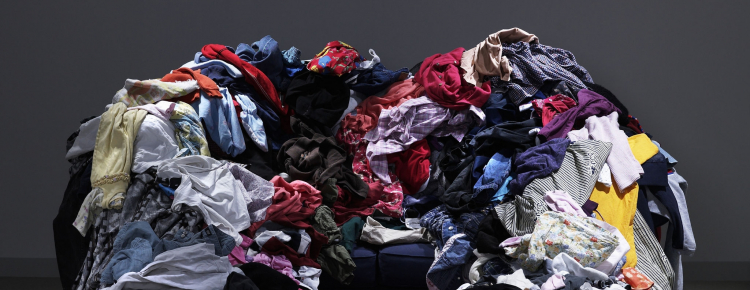
Since the beginning of ages, we humans have prioritized our three basic necessities very well – food, clothing, and shelter. With changing times, different discoveries and revolutions have led these industries in society. However, in recent times our desire for luxury has ruled over ethics.
We all have different styles and preferences when it comes to fashion. We follow different celebrities and influencers to keep ourselves update on the latest trends. We know who to follow for the latest fashion news, what styles are ‘in’, and what design and brands we love, but how much do we actually know about how our ever-changing demands for fashion are met? Big export houses and production units are constantly working on excruciating processes to meet our needs which include designing, dyeing, manufacturing, finishing, and much more. These production processes create a lot of waste in the form of excessive raw materials, chemical treatments, fabric scrap, and finished garments themselves.
We’re talking about pre-consumer waste that is often hidden from the customers. Before your finished product reaches you, thousands of trees are cut to get cellulosic fabric, fields are made barren to extract raw materials for finishing, dyes, oils, and chemicals are used and released in rivers affecting the population surrounding these water sources. Additionally, hundreds and thousands of prototypes and samples end up in landfills after these rigorous processes. Before a design is even finalized, at least 50-60 samples are made just to check if the proposed design is feasible and will perform well in the market. Most of the initial samples don’t end up being manufactured and are disposed of in landfills.
As Alaistair Fuad-Luke, an international sustainable design activist has said,
“Design facilitates mass production and rapid turnaround of new styles ensuring shorter product (market) life cycles and encouraging consumption for fashion’s sake rather than for real need.”
The fashion industry produces so much waste in just the production processes that it is arguably the 2nd most polluting industry in the world. But unsustainable practices, excessive waste, and pollution are not all the mass production industry offers.
In big manufacturing units, low salaries and violation of company policies becomes a major factor in workers’ exploitation. Well-known “big brands” have policies against workers’ exploitation, especially regarding overtime, harassment, and other human rights. However, most export houses do not regulate themselves according to them in lieu of finishing the order and often overwork the employees. The laborers working in manufacturing units, which include mostly women, are barely provided minimum living wages, overworked, and often harassed. The employees working on production lines are often underpaid and thus prefer working overtime to earn enough wages for their survival.
As students of Fashion Technology, we have worked in different export houses as interns. Even though the companies have regulations against exploitation and violence against the employees, abusive language, and disrespect for minimum wage workers is treated casually. Rather than creating a healthy work environment to motivate the staff, employers tend to use their power to harass the workers, and I quote one such employer: “these workers only work when you condescend them, no need to pay attention.” These are the working conditions that artisans and operators face in big industries.
While we love the new trends and going shopping to buy new clothes, we usually don’t end up wearing them more than thrice. Newer clothing articles are gaining instant recognition because of social media and big fashion companies profit from the ever-changing styles. Fast fashion has bloomed due to this continuous need to buy new apparel products in lieu of adapting to trends faster. This practice has given birth to global waste and made us as consumers, blind towards environmental issues. We are losing the culture of hand-me-downs and reusing or recycling older clothes. The “aesthetic” fashion has replaced thrift shopping. The notion of fashion being “new” is giving rise to unsustainable practices for maximum profit in the market.
A solution to this is SLOW FASHION. As Professor Hazel Clarke of the Parsons School of Design, New York, explains the term:
“The slow approach presents a prospect of fashion minus many of the worst aspects of the current global system, especially its extreme wastefulness and lack of concern for environmental issues.”
The term “slow clothes movement” was coined by Angela Murrills, a fashion writer for Georgia Straight in 2006. Hazel Clark also writes about the ‘Three Lines of Reflection’ which are the given; “the valuing of local resources and distributed economies; transparent production systems with less intermediation between producer and consumer; and sustainable and sensorial products that have a longer usable life and are more highly valued than typical ‘consumables’.”
Think of garments produced through slow fashion practices as an investment in a good quality product, which has functional longevity and goes beyond the ever-changing fashion seasons. In addition, it provides an option to be ecologically and economically considerate while still getting the designs and quality of our choice.
“Slow living is a process whereby everyday life – in all its pace and complexity, frisson and routine – is approached with care and attention, as subjects attempt to negotiate the different temporalities that they daily experience. It is above all an attempt to live in the present in a meaningful, sustainable, thoughtful and pleasurable way.” (Parkins and Craig, Slow Living)

